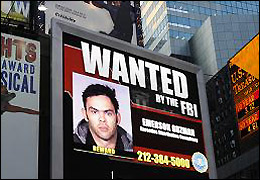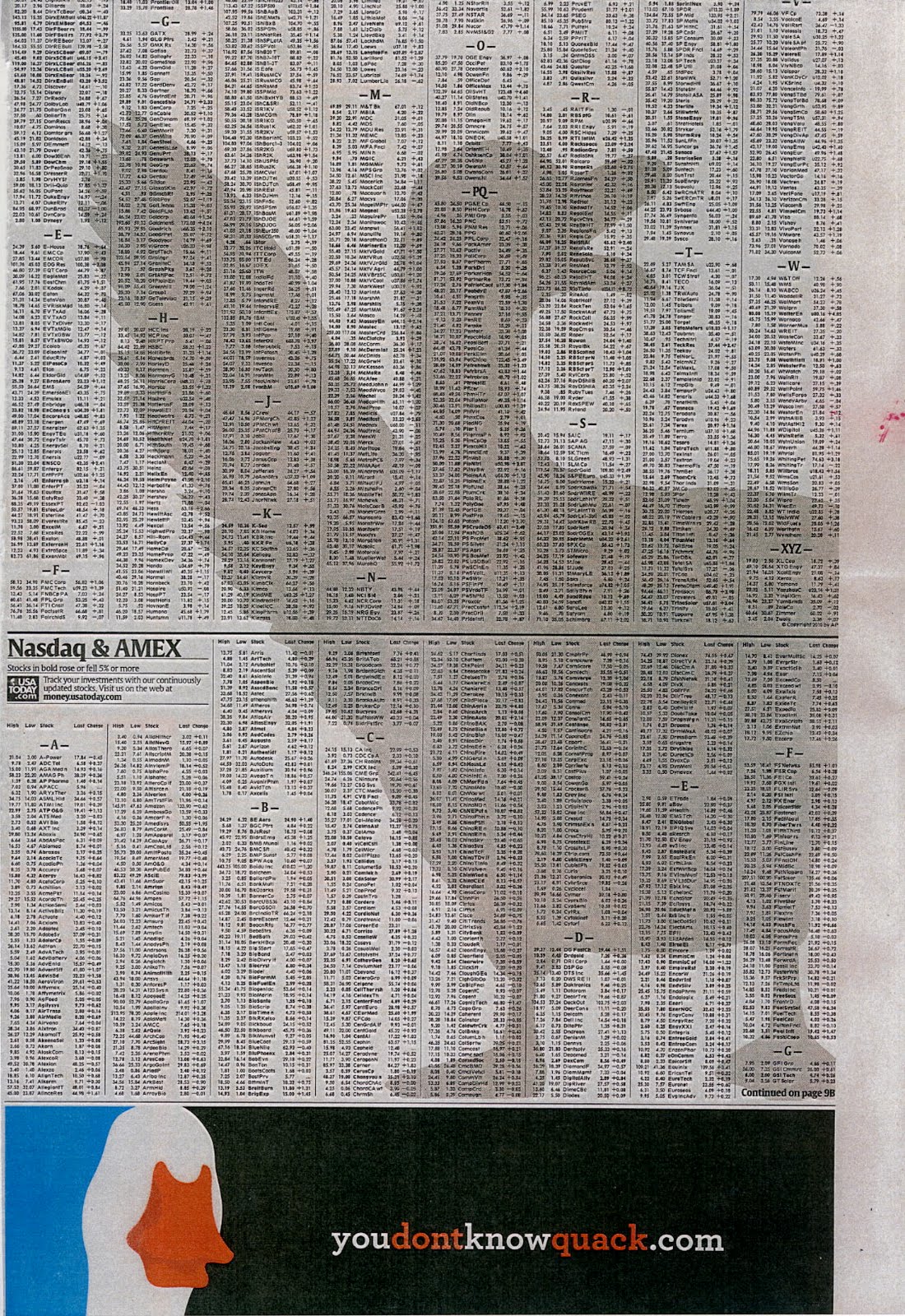 Since OOH / traditional media is on the decline, donating Billboard space makes sense... but what I don't understand is why they gave up such valuable real estate. Times Square placements go for a a pretty hefty sum, and the intended audience is generally tourists. Is it worth it to give this highly valuable placement to an ephemeral audience, who will barely be in the city long enough to catch / spot these criminals? Or would it be more efficient to donate a spot in a more residential neighborhood?
Since OOH / traditional media is on the decline, donating Billboard space makes sense... but what I don't understand is why they gave up such valuable real estate. Times Square placements go for a a pretty hefty sum, and the intended audience is generally tourists. Is it worth it to give this highly valuable placement to an ephemeral audience, who will barely be in the city long enough to catch / spot these criminals? Or would it be more efficient to donate a spot in a more residential neighborhood?
Monday, January 25, 2010
The Law in Times Square
The FBI has partnered with Clear Channel Outdoor, an outdoor media vendor, to launch an electronic billboard in Times Square to publicize their Most Wanted. This billboard is one of 1,500 billboards in 40 states. Since 2007, the FBI has used billboards to catch criminals and solve ~30 criminals as a result of these publicity efforts.
 Since OOH / traditional media is on the decline, donating Billboard space makes sense... but what I don't understand is why they gave up such valuable real estate. Times Square placements go for a a pretty hefty sum, and the intended audience is generally tourists. Is it worth it to give this highly valuable placement to an ephemeral audience, who will barely be in the city long enough to catch / spot these criminals? Or would it be more efficient to donate a spot in a more residential neighborhood?
Since OOH / traditional media is on the decline, donating Billboard space makes sense... but what I don't understand is why they gave up such valuable real estate. Times Square placements go for a a pretty hefty sum, and the intended audience is generally tourists. Is it worth it to give this highly valuable placement to an ephemeral audience, who will barely be in the city long enough to catch / spot these criminals? Or would it be more efficient to donate a spot in a more residential neighborhood?
 Since OOH / traditional media is on the decline, donating Billboard space makes sense... but what I don't understand is why they gave up such valuable real estate. Times Square placements go for a a pretty hefty sum, and the intended audience is generally tourists. Is it worth it to give this highly valuable placement to an ephemeral audience, who will barely be in the city long enough to catch / spot these criminals? Or would it be more efficient to donate a spot in a more residential neighborhood?
Since OOH / traditional media is on the decline, donating Billboard space makes sense... but what I don't understand is why they gave up such valuable real estate. Times Square placements go for a a pretty hefty sum, and the intended audience is generally tourists. Is it worth it to give this highly valuable placement to an ephemeral audience, who will barely be in the city long enough to catch / spot these criminals? Or would it be more efficient to donate a spot in a more residential neighborhood?
Saturday, January 23, 2010
Google Billboards
Google is going to start selling billboard ad space in its street views portion of Google Maps.

I'm curious... since Google typically specializes in animated internet ads, will the ads on the billboards be static to imitate real life? Or animated, as a continuation of the physical to digital transition/balance? [via PC World]

I'm curious... since Google typically specializes in animated internet ads, will the ads on the billboards be static to imitate real life? Or animated, as a continuation of the physical to digital transition/balance? [via PC World]
Thursday, January 21, 2010
Social Suicide

The Web 2.0 Suicide Machine essentially deletes any Social Media presence you may have. Not only does it sign you out of and change the password to social networks, it also deletes, one by one, all of your connections, claiming to "improve your relationships" and "get rid of stalkers."
Tuesday, January 19, 2010
College Kids and Happiness
A lot of times, advertisers will try to execute guerrilla ad campaigns that don't necessarily align with the brand messaging. Coke, however, recently pulled off a truly integrated and relevant stunt.
Keeping with the theme of Coke's "The Happiness Factory" spot, agency Definition 6 installed a special vending machine on a college campus, basically acting as a "Happiness Factory" in and of itself.
Skip to 1:02, at which point the Coke executives grin widely and declare this a "success." [Via]
Keeping with the theme of Coke's "The Happiness Factory" spot, agency Definition 6 installed a special vending machine on a college campus, basically acting as a "Happiness Factory" in and of itself.
Skip to 1:02, at which point the Coke executives grin widely and declare this a "success." [Via]
Thursday, January 14, 2010
Multitasking
As previously noted, traditional media is trying to come up with innovative ways to slow and prevent its impending demise. This particular example is a nontraditional ad placement scanned from USA Today (via copyranter). Aflac's duck is silhouetted in the Stocks page , with a call to action on the bottom. The featured microsite features quasi-deceptive questions about health insurance, proving that "you don't know quack."
 It's certainly a genius idea, though I'm not sure if too many people still check stock quotes in the paper. This also strikes me because it comes right after Aflac put its account in review, and is looking for a new agency. Why make such a bold move and fire your agency when you have such big nontraditional on the horizon?
It's certainly a genius idea, though I'm not sure if too many people still check stock quotes in the paper. This also strikes me because it comes right after Aflac put its account in review, and is looking for a new agency. Why make such a bold move and fire your agency when you have such big nontraditional on the horizon?
 It's certainly a genius idea, though I'm not sure if too many people still check stock quotes in the paper. This also strikes me because it comes right after Aflac put its account in review, and is looking for a new agency. Why make such a bold move and fire your agency when you have such big nontraditional on the horizon?
It's certainly a genius idea, though I'm not sure if too many people still check stock quotes in the paper. This also strikes me because it comes right after Aflac put its account in review, and is looking for a new agency. Why make such a bold move and fire your agency when you have such big nontraditional on the horizon?
Monday, January 11, 2010
Saving the Paper
Over 350 magazines closed their doors in 2009.
In true Darwinistic form, as our generation spends increasing amounts of time in front of screens, traditional media has either had to evolve or whither away. A few answers have included enabling mobile websites, social media, and "apps."

Recognizing the danger, Hearst Media, the media giant which owns Cosmo, Esquire, and Popular Mechanics, has fused digital with traditional to create its own self-serving version of Amazon's Kindle, called the Skiff E-Reader. In short, it's a Kindle for your Newspapers and Magazines. Now how will it compete with the upcoming Apple Tablet, and everyone else's digital answer to the dying traditional problem?
Labels:
Apple Tablet,
Digital Media,
E-Reader,
Hearst,
Traditional Media
Monday, January 4, 2010
Brands Take On the Hollywood Walk of Fame
The Hollywood Walk of Fame, which is filled with starred tiles honoring celebrities for their show biz contribution, is opening the floor to sponsorship. Brands such as L'Oreal and Absolut Vodka have already purchased the iconic starred tiles for $1 Mil, with copy that reads "Friends of the Walk of Fame."

I find it odd that this museum, sponsored by the Chamber of Commerce, a Government Agency, is accepting money from outside advertisers. Although this is a genius, innovative media placement idea, it seems to be a slipper slope. If the Government can accept advertising from brands here, does this take away or effect their ability to make policy? What would stop them to opening other doors to sponsorship of other agencies?
Subscribe to:
Posts (Atom)
